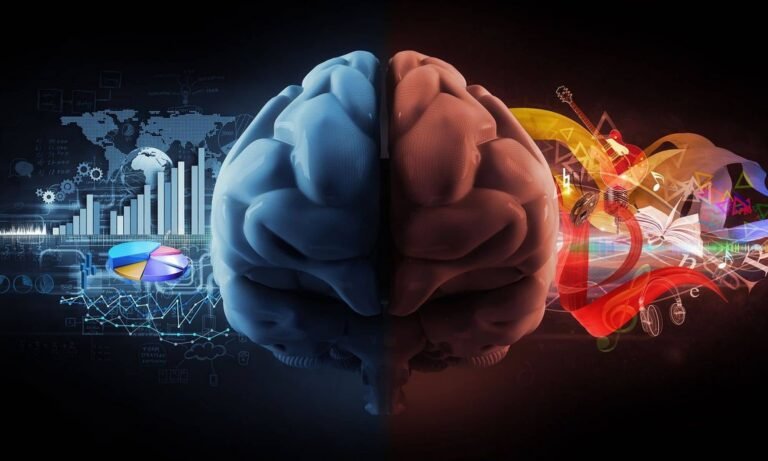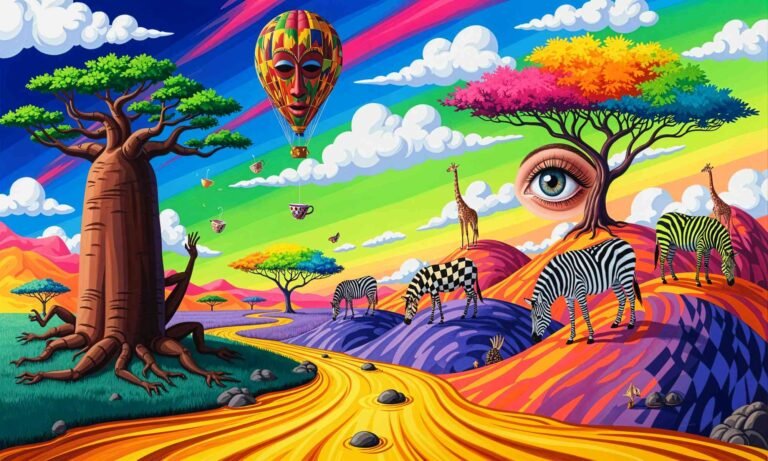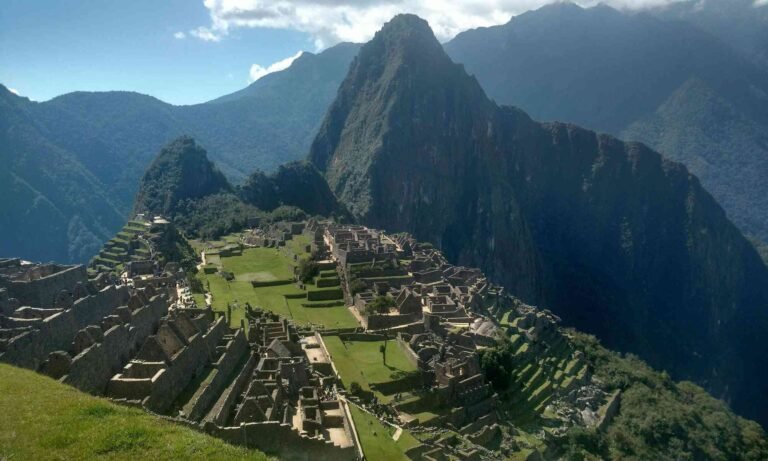The Allegory of the Cave is a philosophical metaphor presented by the Greek philosopher Plato in his work “The Republic” (Book VII). It is one of the most well-known and insightful allegories in Western philosophy, illustrating Plato’s views on human perception, knowledge, and the nature of reality. In the allegory, Plato describes a group of prisoners who have been chained inside a dark cave since birth, unable to see anything but the shadows cast on the wall in front of them. These shadows, created by objects passing in front of a fire behind them, represent the prisoners’ perception of reality.
One prisoner is eventually freed and exposed to the outside world, where he discovers the true source of the shadows and gains a deeper understanding of reality. This journey symbolizes the philosopher’s path from ignorance to enlightenment, highlighting the transformative power of education and the pursuit of knowledge. The allegory emphasizes the importance of questioning our perceptions and seeking a higher truth beyond the superficial appearances of the world around us.
Allegory Of The Cave
- The Cave
- Prisoners: Imagine a group of prisoners who have been chained inside a dark cave since birth. They are shackled in such a way that they can only see the wall in front of them and cannot turn their heads.
- Shadows: Behind the prisoners, there is a fire, and between the fire and the prisoners, there is a raised walkway. People outside the cave walk along this walkway, carrying objects that cast shadows on the wall the prisoners are facing. The prisoners see these shadows and hear echoes of sounds, believing these shadows and echoes constitute reality.
- Escape and Enlightenment
- Liberation: One prisoner is freed and forced to turn around and look at the fire. The light from the fire is painful and blinding, and he initially resists the reality of the objects casting the shadows.
- Journey Out of the Cave: Gradually, the freed prisoner becomes accustomed to the light and begins to see the objects outside the cave, understanding that these are more real than the shadows. Eventually, he is dragged out of the cave into the sunlight, representing the painful but enlightening process of gaining true knowledge.
- Understanding the Sun: Outside the cave, the prisoner sees the sun, which illuminates everything and symbolizes the ultimate source of truth and knowledge.
- Return to the Cave
- Returning to Darkness: The enlightened prisoner, now aware of the deeper truths, returns to the cave to free the others. However, upon re-entering the darkness, his eyes are blinded by the lack of light, and the prisoners still in chains do not believe his accounts of the outside world. They remain convinced that the shadows on the wall are the only reality.
Philosophical Themes
- Perception vs. Reality: The shadows on the wall represent the superficial and distorted perceptions of reality that most people have. The journey out of the cave symbolizes the philosopher’s path from ignorance to knowledge and enlightenment.
- Education and Enlightenment: The allegory emphasizes the transformative power of education. It suggests that true knowledge is not just about acquiring information but involves a profound change in one’s understanding and perception of the world.
- The Role of the Philosopher: The freed prisoner represents the philosopher, who seeks the truth and gains enlightenment. The philosopher’s duty is to return to the cave (the realm of ignorance) and help others achieve enlightenment, despite resistance and misunderstanding.
- The Sun: The sun symbolizes the ultimate truth and the Form of the Good in Plato’s philosophy. It is the source of all reality and knowledge, much like the sun in the physical world enables sight and life.
Contemporary Relevance
The Allegory of the Cave continues to be relevant in modern discussions about reality, perception, and education. It can be applied to various contexts, such as:
- Media and Information: The allegory can be used to critique how media shapes our perceptions of reality, often providing only a shadow of the truth.
- Scientific Progress: The journey out of the cave can symbolize the pursuit of scientific knowledge and the challenges of overcoming entrenched beliefs and paradigms.
- Personal Growth: On a personal level, the allegory can represent the struggle to overcome ignorance and achieve self-awareness and enlightenment.
Overall, the Allegory of the Cave remains a powerful metaphor for the human condition, encouraging a deeper exploration of reality and the pursuit of true knowledge.
The Republic (Book VII)
Book VII of Plato’s “The Republic” is most famous for presenting the Allegory of the Cave, but it also delves into broader themes about education, the nature of knowledge, and the ideal society. Here’s a detailed look at the content and themes of Book VII:
Structure And Content
- The Allegory of the Cave
- As previously summarized, Plato uses this allegory to illustrate the philosopher’s journey from ignorance to enlightenment and the nature of human perception versus reality.
- The Divided Line
- Following the allegory, Plato presents the analogy of the divided line, a further elaboration on the levels of knowledge and reality. The line is divided into four sections, each representing a different state of mind and corresponding objects:
- Imagination (Eikasia): The lowest level, associated with shadows and reflections, representing illusion and false beliefs.
- Belief (Pistis): Pertains to the physical world and tangible objects, representing empirical knowledge or belief in physical reality.
- Thought (Dianoia): The third level involves abstract thinking and reasoning about mathematical and scientific concepts, representing rational thought.
- Understanding (Noesis): The highest level, involving direct insight into the Forms, especially the Form of the Good, representing true knowledge and philosophical understanding.
- Following the allegory, Plato presents the analogy of the divided line, a further elaboration on the levels of knowledge and reality. The line is divided into four sections, each representing a different state of mind and corresponding objects:
- The Philosopher-King
- Plato argues that those who have achieved the highest level of understanding (Noesis) are best suited to govern society. These philosopher-kings possess the wisdom and insight necessary to rule justly.
- He outlines the rigorous education process necessary to develop such rulers, emphasizing the importance of a well-rounded education in various disciplines, including mathematics, dialectics, and physical training.
- Education and the Ideal State
- Plato outlines an educational curriculum designed to develop philosopher-kings:
- Early Education: Involves music and poetry to shape character and physical training to build strength and discipline.
- Mathematics and Abstract Thought: From around age 20, students should study arithmetic, geometry, astronomy, and harmonics to train their minds in abstract thinking.
- Dialectics: Around age 30, the best students are introduced to dialectics, the method of questioning and reasoning to uncover the truth about the Forms.
- Practical Experience: After rigorous theoretical training, potential rulers should gain practical experience in governance before fully assuming leadership roles.
- Plato outlines an educational curriculum designed to develop philosopher-kings:
- The Sun and the Good
- Plato uses the metaphor of the sun to explain the Form of the Good, which is the highest form of reality and knowledge. Just as the sun illuminates the visible world and enables sight, the Form of the Good illuminates the intelligible world and enables understanding.
- The Form of the Good is the ultimate source of truth and knowledge, and understanding it is the philosopher’s ultimate goal.
Themes
- Education and Knowledge
- Plato emphasizes the transformative power of education in achieving enlightenment and true understanding. He argues that only through a structured and comprehensive educational system can individuals reach their full potential and become fit to rule.
- The Nature of Reality
- The allegory and the divided line both illustrate Plato’s theory of the Forms, suggesting that the physical world is only a shadow of the true reality, which consists of unchanging and perfect Forms.
- Philosophical Rulership
- The concept of the philosopher-king underscores Plato’s belief that those who understand the Forms, particularly the Form of the Good, are best equipped to govern a just society.
- Moral and Intellectual Development
- Plato links moral and intellectual development, suggesting that true knowledge leads to a better and more just character. The philosopher’s journey is not just an intellectual one but also a moral ascent.
Contemporary Relevance
- Educational Philosophy: Plato’s ideas on education continue to influence modern educational theories, particularly the emphasis on critical thinking, moral education, and the development of well-rounded individuals.
- Political Theory: The notion of the philosopher-king raises questions about the qualifications of leaders and the role of wisdom and knowledge in governance.
- Epistemology and Metaphysics: Plato’s distinction between the physical world and the world of Forms continues to be a foundational concept in discussions about the nature of reality and knowledge.
What’s More
The posts in My Blog feature reflective, story-driven pieces rooted in personal and societal insights.
The topics in My Interests explore abstract, philosophical ideas and their cultural and societal impact.
👁️ 10,042 Views















